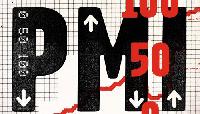
Now, frequently PMI data are quoted about the condition of Indian economy. PMI stands for ‘Purchasing Managers’ index’ and is considered as an indicator of the economic health and investor sentiments about the manufacturing sector (there is services PMI as well).
In a PMI data, a reading above 50 indicates economic expansion, while a reading below 50 points shows contraction of economic activities.
The PMI is constructed separately for manufacturing and services sector. But the manufacturing sector holds more importance.
Before going into the details of PMI like its components, origin of the index is to be understood. The Institute of Supply Management (ISM) originally developed PMI and is now estimating it for the US economy. The ISM is a non-profit group having more than 40,000 members from the supply management and purchasing segments. Strength of the ISM’s PMI is its large number of data quote.
ISM’s PMI index was based on five major indicators: new orders, inventory levels, production, supplier deliveries and the employment environment. All these indicators strategically are capable of showing the business momentum in the industrial sector of an economy.
How PMI is different from IIP
The popular index that measures growth in the industrial sector as far as India is concerned is the CSO prepared Index of Industrial Production. IIP shows the change in production volume in major industrial subsectors like manufacturing, mining and electricity. Similarly, the IIP also gives use based (capital goods, consumer goods etc) trends in industrial production. It covers broader industrial sector compared to PMI.
But compared volume based production indicator like the IIP, the PMI senses dynamic trends because of the variable it uses for the construction of the index.
For example, new orders under PMI show growth oriented positive trends and not just volume of past production that can be traced in an ordinary Index of Industrial Production. Inventory level shows recessionary or boom trends. Employment scenario is also sentimental indicator. Hence, the PMI is more dynamic compared to a standard industrial production index.
PMI for India
For India, the PMI Data is published by Japanese firm Nikkei but compiled and constructed by Markit Economics (for the US, it is the ISM). A manufacturing PMI and a services PMI are prepared and published by the two. The Nikkei and markit economics websites says that PMI data are based on monthly surveys of carefully selected companies.
Variables used in constructing the PMI for the Manufacturing sector
The variables used to construct India’s PMI are: Output, New Orders, Employment, Input Costs, Output Prices, Backlogs of Work, Export Orders, Quantity of Purchases, Suppliers‟ Delivery Times, Stocks of Purchases and Stocks of Finished Goods. Similar variables (but less in number) are used for the construction of services PMI.
The PMI is very closely watched, as it shows the investor sentiment in an economy’s manufacturing sector. In terms of composition, we can say the PMI is a sentiment tracking index. On the other hand, the Index of Industrial Production indicates changes in production volume or output.
*********









